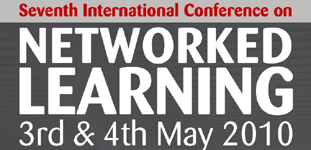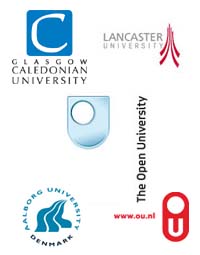

The creative power of online collaborative environment: Using Knowledge Forum as an example
Yu-Hui Chang, Huang-Yao Hong
National Chengchi University, Taiwan, Taipei, Taiwan
Abstract
The purpose of this study was to investigate the impact of a collaborative knowledge building environment called "Knowledge Forum" (KF) on students' perceived creative climate in class. Knowledge building is a social process focused on sustained production and improvement of ideas of value to a community or an organization (Scardamalia, & Bereiter, 2003) and is complemented by KF software which enables a knowledge building environment (Scardamalia & Bereiter, 2006).
Participants in the present study were 30 Taiwanese college students who took a university course about living technology. They were guided to identify some authentic technology-related real life problems and then work collectively to generate ideas and new knowledge in order to address these problems. By engaging students in working in KF, we expected that students will become more self-directed learners and able to co-structure their collective knowledge in the community, Moreover, we expected that they will perceive the learning environment to be more creative.
Data analysis includes: (1) descriptive statistics which analyzed student online discourse activities recorded in a KF database, (2) social network analysis which explored how students collaborated online; and (3) a survey called "Creative Climate Questionnaire (CCQ)" which investigated the characteristics of KF as a creative learning environment. CCQ was originally designed by Swedish scholar Ekvall (1987). There are in total 50 question items with 10 dimensions, including: (1) challenge, (2) freedom, (3) idea support, (4) trust/openness, (5) playfulness/humor, (6) conflict, (7) debate, (8) risk-taking, (9) liveliness, and (10) reflection time. Each dimension consists of five question items. All items adopt a four-point Likert scale. The original scale has an internal-consistency reliability of Cronbach α =. 87 (N = 703), with sub-scales ranging from .70 to .86.
Our preliminary findings indicate that students were able to generate, exchange, and elaborate ideas by, interacting and collaborating with one another in KF. Further, the results based on the CCQ suggest that of ten factors that characterize a creative environment, seven of them (including playfulness/humor; idea support; liveliness; debate; trust/openness; and freedom) were perceived as much superior than another two reference groups: (1) Taiwanese graduate students (N=703) and (2) Swedish company employees (N=245). The results showed that KF as a knowledge building environment is conducive to creative group collaboration.
| About NLC | Welcome Messages| Acknowledgwments | Conference Proceedings| Keynote Speakers| Index of Presenting Authors| Contact |